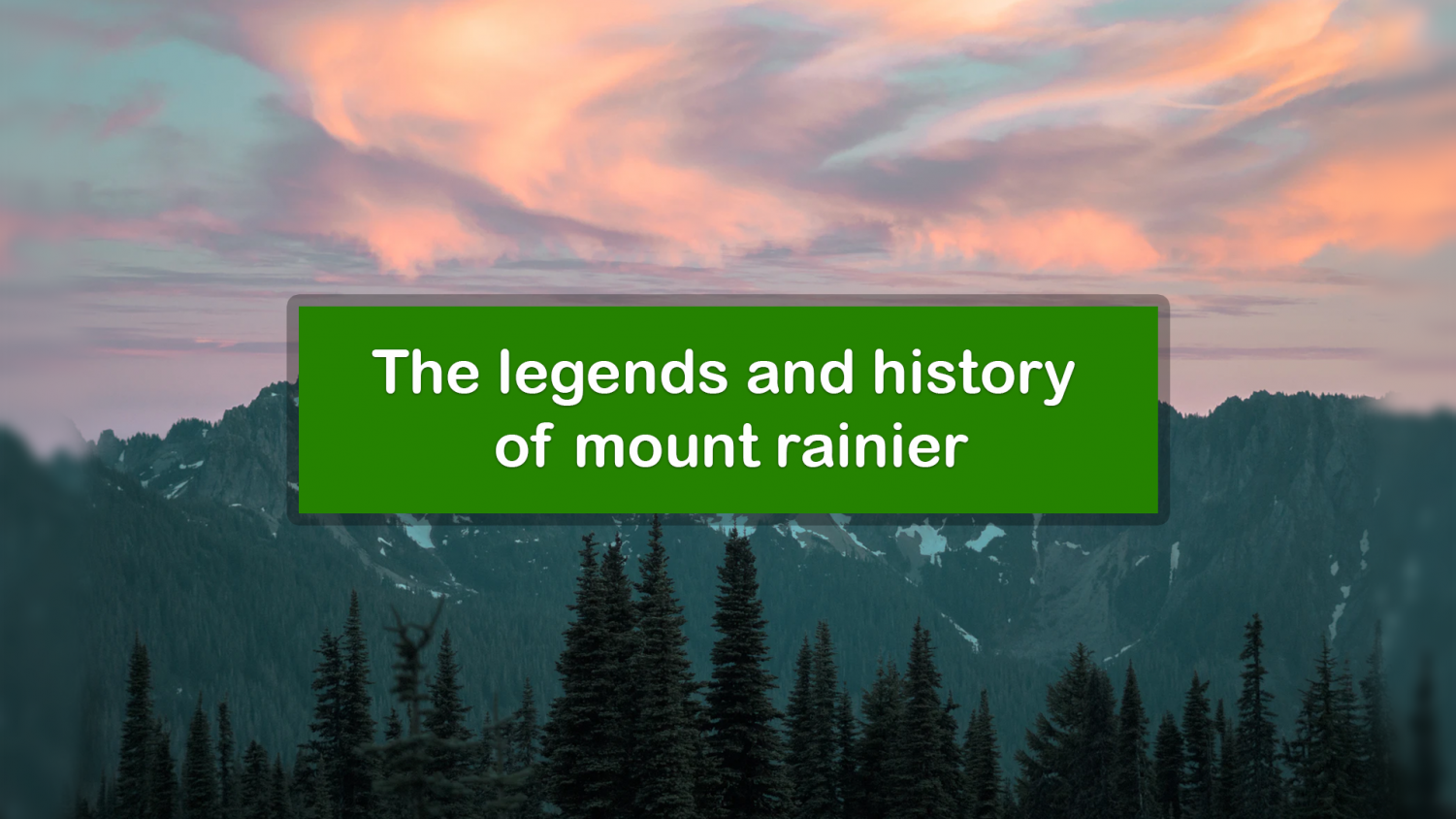The legends and history of mount rainier
July 4, 2021
Standing at 14,410 feet above sea level, Mount Rainier is one of Washington State’s natural treasures and iconic landscapes. The glacial peak is an active volcano, but thriving with wildlife, an aged forest, rivers, missing hikers, hidden dangers, history and even legends.
“Mount Rainier National Park is part of the traditional lands of indigenous people who have been here for generations,” the National Park website stated. “We learn from their example of stewardship and respect for the land.”
From Native American tribes, world explorers, tourists, industrialism, the Great Depression, WWII and picnicking families, all have visited the iconic landscape. Mount Rainier has seen people and times of all kinds. At first glance when visiting the park, the land begins to articulate the tales of its life and the enchantment ensues.
The Cowlitz, Muckleshoot, Nisqually, Puyallup, Squaxin, Island and Yakama were some of the native tribes who presided over the mountain. Archeologists have discovered that the ancestors of these tribes would hunt seasonally and gather resources like medicinal plants and berries. For thousands of years the native people were living on and traveling to Mount Rainier.
A native American guide named Sluiskin in 1833 led a party of European settlers to the mountain and was concerned with their intention of climbing. The concern was due to the belief that a malevolent spirit lived at the lake of fire on the summit.
The tribes knew the stories of the volcano and never climbed past the snowline. Mount Rainier and other volcanoes, according to their stories, had romantic relationships with each other. The natives considered them deities who were vengeful and erratic with their love affairs and each having an evil spirit at their peaks.
The mountain was known to the tribes as Talol, Takoma or Tahoma, meaning “mother of waters,” or “snow-covered mountain.” Yet another possible meaning is “larger than mount baker.” The current name was given by George Vancouver, who named it Rainier in honor of his friend, Rear Admiral Peter Rainier in 1792.
In 1899, various businesses, scientists and mountaineers came together to establish a park around Mount Rainier, thus making it the nation’s fifth national park. When agriculture, grazing and mining on the mountain met with difficulties, the interest shifted toward tourism and study of the glacial terrain. Even after the opening of the park the mountain remained important to the native people.
Many changes began to be seen at the mountain once the park opened. By 1930 roads were being built and surveyed, and The Paradise Inn was opened with plans to develop the Sunrise Day Lodge. All the changes brought about debate to how much of the area should be developed or left as wilderness.
During the Great Depression, the park started to try and add more attractions. Visitation to the park was down even after a nine-hole golf course, a new area at the Sunrise and plans for a ski lift were being added. With visitors still dwindling, the park received funding from President Franklin D. Roosevelt’s “New Deal,” for improvements to campgrounds, trails and forest fire protection.
During WWII the park saw little visitors and was instead used as a training ground for the 10th Mountain Division, who were known as skier soldiers, with a unique style of combat. After the war the focus for an increase in visitors to the park started.
In the mid-1950s the federal government started a project called Mission 66 and were seeking to upgrade national parks nationwide. Mount Rainier would be the first to get development under the new program and served as an example to various national trends.
Since the opening of the park, there have been millions of people who have visited and almost half a million people have attempted a climb to the summit. The mountain is used in many different ways recreationally and certain areas have been zoned for those purposes. 98% of the park was designated as wilderness by the Washington Wilderness Act of 1988 and there has been an effort to understand and protect the natural resources.
Historically the mountain has been significant to many people, whether native or otherwise. A lot of changes, views and meaning of the mountain have shifted since the start, but with all the increase in use can the park remain standing for more generations to enjoy?
“If the past history is any guide,” the park website stated, “The park will adapt to new challenges and continue to preserve the mountain as a place of wonder.”


Phil Nothstein • Jul 28, 2021 at 8:56 AM
The Glaciers should be fine. This winter was a huge snow fall. I skied Crystal in late May which is rarely done. When the hot weather came the Glaciers had a couple of feet of protection. If August is average with some cloud cover things should be ok. But the forest needs rain asap.